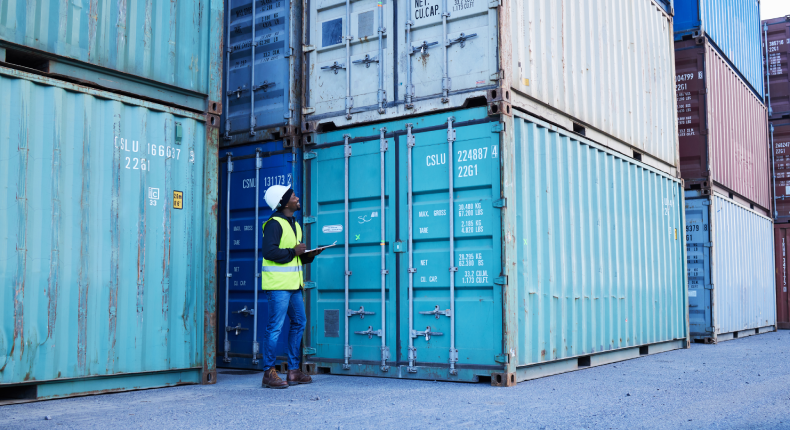Logistics is an essential component for the efficient functioning of any supply chain. In this context, logistics nodes play a fundamental role. Throughout this article, we will explore in depth what logistics nodes are, different from logistical flow the their importance in the sector, the types that exist, and the benefits they bring to organisations. The information presented here is supported by verified data and considers Spanish regulations on logistics and transport.
What are Logistics Nodes?
Logistics nodes are strategic points in the supply chain where the concentration and distribution of goods occur.
These locations can include warehouses, distribution centres, ports, airports, cargo terminals, and retail stores.
The main function of a logistics node is to facilitate the flow of products and ensure they reach their destination efficiently.
A logistics node can be seen as a link within a series of operations that range from product acquisition to final delivery to the consumer. This concept is fundamental to understanding how modern logistics networks are organised and managed.
Importance of Logistics Nodes
The relevance of these nodes in the supply chain is significant for various reasons:
- Operational efficiency: Logistics nodes optimise inventory management, Therefore, it provides a competitive advantage to the company, allowing for reduced operating costs and maximised efficiency. By centralising operations in strategic locations, companies can minimise transportation time and improve response times.
- Flexibility: They enable companies to adapt to changes in market demand. With the capacity to redistribute goods swiftly, responding to fluctuations in orders and consumer needs is facilitated.
- Improved customer service: By having a well-designed network of nodes, companies can offer a more agile and efficient service. This translates into shorter delivery times and more effective communication with customers.
- Integration of processes: Logistics nodes are crucial for integrating all stages of the supply chain. They facilitate the connection between suppliers, manufacturers, distributors, and consumers, helping achieve greater synergy in processes.
- Data generation: Each node can serve as a data collection point that helps optimise operations. Through the analysis of the generated information, companies can identify areas for improvement and make informed decisions.
Types of Logistics Nodes and their function in logistics
It is essential to classify logistics nodes according to their function in the supply chain.
Below are the most common types:
- Distribution centres: A distribution centre is a node designed to receive, store, and send goods to points of sale or end consumers. These centres are usually equipped with advanced technology that facilitates inventory management and order preparation.
- Warehouses: Warehouses are nodes primarily focused on storing products. They can come in different types, including cold storage facilities or automated warehouses. Their function is to ensure that products are available when needed.
- Ports and airports: These nodes are essential in the context of international transport. Seaports allow for the arrival and departure of goods by sea, while airports facilitate the rapid air transport of products. Both are critical points in modern logistics.
- Cargo terminals: Cargo terminals are transhipment points where products are transferred from one mode of transport to another, such as from trucks to trains. This infrastructure is vital for the efficient flow of goods along the supply chain.
- Retail stores: Although their primary function is selling to the public, retail stores also act as logistics nodes. They facilitate the distribution of products to consumers and may offer an additional service for picking up and returning goods.
What benefits do they offer?
A lot of them provide a range of benefits that can make a difference in a company’s competitiveness.
Some of the most notable include:
- Reduced costs: By optimising distribution and operations, logistics nodes help companies lower expenses. This is especially important in an environment where profit margins can be tight.
- Improvement in supply chain visibility: The implementation of technology in logistics nodes allows for more effective tracking of goods. This gives companies better visibility throughout the supply chain, which is essential for inventory control and planning.
- Increased speed of delivery: Logistics nodes enable a more agile management of shipping and receiving processes. This translates into an increase in the speed at which products reach their destinations, which is a key factor in customer satisfaction.
- Scalability: As a company grows, the network of logistics nodes can adapt and expand to meet new demands. This capacity for scaling is a vital element in the growth strategy of any organisation.
- Sustainability: The optimisation of logistics nodes can also contribute to sustainability. By reducing the distance goods need to travel and promoting more efficient practices, carbon emissions are lowered, and a more environmentally friendly approach to logistics is encouraged.
Logistics nodes are essential for the effective management of the supply chain and offer significant advantages that can directly impact the profitability and effectiveness of companies.
The effective implementation of logistics nodes not only optimises internal processes but also enhances customer satisfaction, a fundamental aspect in today’s business world.




